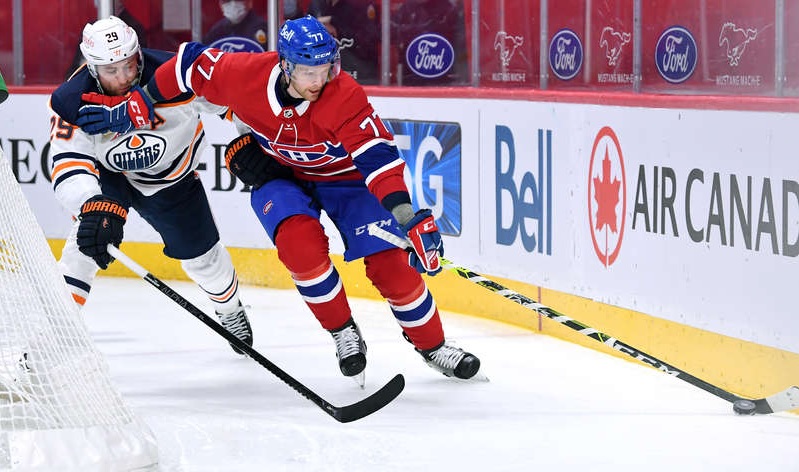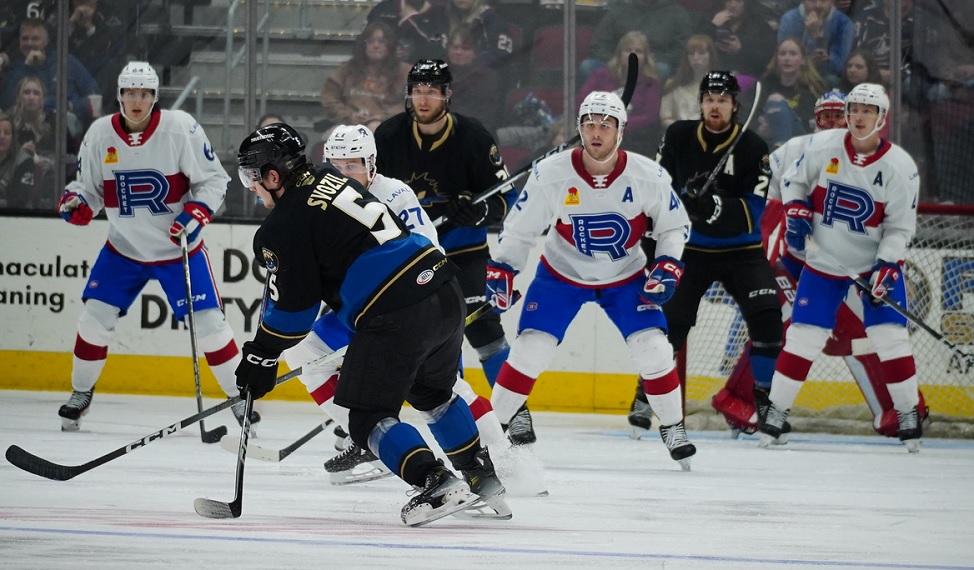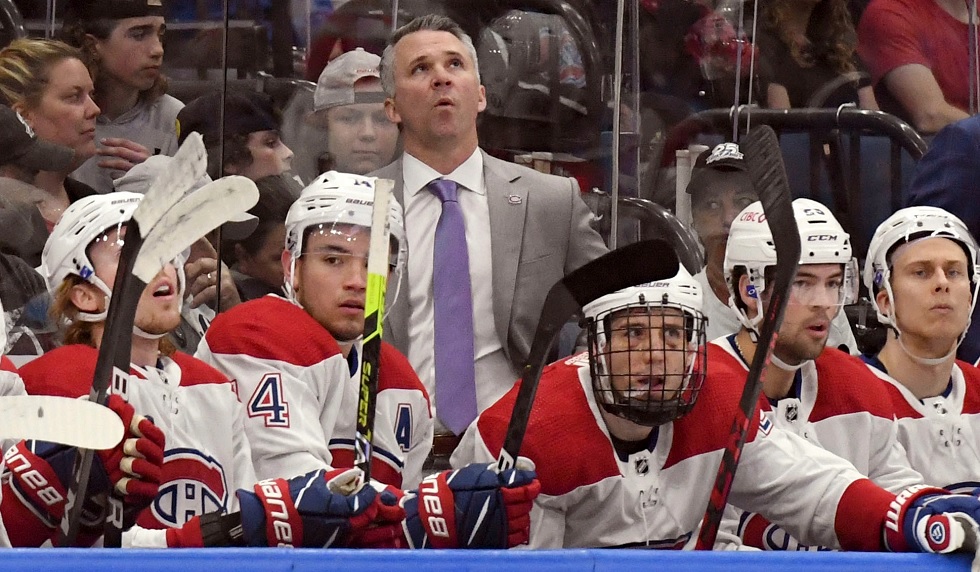HabsWorld.net --
The Artturi Lehkonen trade wasn’t Montreal’s only move of some significance at the trade deadline as they also flipped Brett Kulak to Edmonton for William Lagesson, a 2022 second-round pick, and a 2024 seventh-rounder. Our writers offer up their thoughts on the swap.
Terry Costaris: This is a classic example of the business mantra, “Buy low. Sell high.”
The immediate winner here is Edmonton. The Oilers, however, gave up a lot for a playoff run, depth player in Kulak. He is a replaceable quality bottom half defender who is much easier to find at a low cost in the summer.
Lagesson is like a future Kulak. That is, in a few years, he has the potential to improve to Kulak’s level – if Montreal keeps him. If so, Lagesson may also thus provide some additional return on a future trade deadline deal.
Look at where Kulak was two years ago and where he is today. Is it not possible that Lagesson can catch up to present level Kulak by 2024? And, would this not be the time to let him go as Montreal’s slowly maturing quality defensive prospects will by then be NHL ready?
If Kulak could yield as much as he did at this year’s trade deadline, perhaps Lagesson could also do the same by 2024. So, the Habs bought low with this player and may indeed sell high.
As for the second pick, it replaces the one lost to Arizona for the Christian Dvorak trade, and, given Montreal’s surplus of draft picks, the team now has another dart to throw on the draft board. Alternatively, the Habs have additional currency in swinging a deal for a premium prospect – hopefully a centre from some club that has one too many in this position, such as the Los Angeles Kings, for example.
As far as I’m concerned, you can never have enough draft picks. Really fortunate teams snag two future NHLers per draft. Most fail to pan out due to injuries, the pressures of the professional level, personal issues, and developmental limitations.
The more picks that you have, the more likely one or two per draft make it onto your roster. Now if you get them by Montreal’s “buy low, sell high” approach, even better.
Allan Katz: The Kulak trade is definitely not an absolute victory. Kulak is due a raise, though not necessarily a big one. There is a fair chance Kulak is re-signed by Edmonton. Montreal did the trade to clear dollars for the salary cap and get an asset that can be used in any number of ways in the future.
This is mostly about the second-round pick in the draft. While Kulak’s market price was possibly a third, really no one has been fleeced here. This summer when a number of huge contracts need to be moved, that second-round pick will be much more useful than Kulak himself.
While he is an NHL talent, Kulak is not going to be part of the renaissance that management is trying to create. Edmonton needed a lefty defenceman. Montreal is stacked with left-shooting D’s ready to make a move to the NHL. As the Kulakian Era comes to a close, we say goodbye to a decent defenceman who has been part of the worst Hab team ever and say hello to a housecleaning that is setting the stage for what comes next. Good luck to Kulak as we await the offseason and watch with undying curiosity.
Brian La Rose: Add me to the group of people that were stunned that Montreal got a second-round pick for Kulak. That’s a high price to pay for a player that’s going to be on the third pairing and play very little on special teams. It’s not that I dislike Kulak but he has his limitations. Good for him that he gets to go home which is certainly an added bonus and it wouldn’t be shocking if he signed an extension there. Maybe Oilers GM Ken Holland factored that into the price he paid? Otherwise, they overpaid which is great for the Canadiens.
Lagesson needs to basically play in every game for Montreal to retain his rights as a restricted free agent this summer. That’s not happening. He might get in four or five (unless there’s a rash of injuries which, given the way this season has gone, could certainly happen) but not the 18 he needs. He helped match money and more importantly for the Canadiens’ organization, his inclusion allowed them to not need to pull Xavier Ouellet from what is a ridiculously depleted back end right now. But that’s all there is to that.
One element I’ll note is that the Habs used their third and final retention slot with this deal. While all three are on expiring contracts, those won’t be cleared until the start of the 2022-23 league year which is the beginning of free agency (July 13th this year because of the longer season). If Montreal wants to do a deal with retention on one of their overpaid wingers this offseason, they will have to wait until the start of free agency as a result. I get that it was needed to make the deal work but there is a small opportunity cost as a result of them doing so if it takes away the ability to do such a deal at the draft.
Kevin Leveille: The Kulak deal is an interesting one to me. Lagesson is a depth piece included to make the money work, but he’s a big physical guy that’s more than likely a UFA at the end of the season. This means he comes in, gets a look, and if he does well in his upcoming audition, could be kept around to give the suddenly talented defensive pipeline time to develop and be ready by the time they get to Montreal (as opposed to rushing them and ruining their development). Otherwise, Hughes and Gorton get the financial flexibility to find someone that fits what they want in that role. It’s admittedly a throw-in, but we’ve seen throw-ins like Tatar work out nicely in the past, who knows.
The 2024 seventh-rounder is a low percentage lottery ticket likely included to offset the retaining of salary, not really moving the needle either way, but neither is retaining money on Kulak for a few months.
So, the deal is more likely Kulak for a second-round pick. Kulak was an analytical darling that more than often played much better than his standing in the Habs defensive hierarchy. Having said that, his lack of consistency is why he could never really secure a spot higher in said hierarchy. The advanced stats fans will rightfully point to Kulak getting much less “rope” when placed higher in the lineup than others received when they also showed a lack of consistency, but so is the life of a player acquired basically for free when pitted against higher draft choices or signings made by the organization.
Kulak will now likely get his chance to prove his advanced stats right in Edmonton, so there is a small chance of seeing this move backfire in a big way. However, I don’t believe it will, and I think the nature of the second-rounder received offsets that small potential of seeing Kulak reach “above potential” elsewhere.
That second-rounder is already a very good return based on Kulak’s current status and his projected future outlook in Montreal – a UFA at season’s end on a rebuilding team, so really a rental.
Now consider that should Edmonton go on a tear and get far in the playoffs, the Habs won’t get the 2022 second-rounder as presented. In other words, if the value of the pick obtained diminishes greatly, it goes to Chicago and the Habs get the 2023 pick instead. Edmonton has been crazy inconsistent year-over-year, so getting the better value second-rounder is a great bet for Hughes to make. Overall, I think the move is great, getting multiple lottery tickets for an expiring asset is never a bad idea.
Peter Longo: Let me start off by saying I’m a big fan of Kulak. Over the years he’s worked his way into the lineup as a good skater, good passer, and generally being well-positioned. He’s not flashy, he’s not going to make big plays regularly or make the big hit, but he plays a solid game with limited mistakes. When paired with a strong partner (Petry) we’ve seen him play solid second pairing minutes.
Looking forward, at the end of the season he’ll be a UFA. With Ducharme gone, the Habs might have a chance re-signing him. But as long as his contract demands stay reasonable, I think there are going to be plenty of interested teams looking to bring in a 28-year-old, low-cost, reliable third pairing defenceman.
To replace Kulak, the Habs have a number of prospects (Harris, Guhle, Norlinder) coming up in the system and I suspect one or a combination of them will play sheltered minutes behind Edmundson and Romanov. Alternatively, a depth option (or even keeping Lagesson) can be signed in the offseason if management believes there are no internal solutions.
The uncertainty of Kulak’s UFA status, combined with the Habs prospect depth makes it a relatively easy decision to move Kulak for the right offer. Edmonton’s offer of a second and a seventh-round pick is about as good as it gets. Granted, there’s a low likelihood of drafting and developing someone as good as Kulak with these picks, but the additional selections increase the odds.
Overall, I think it’s an excellent trade. Given the Chiarot and Kulak departures, the Habs will need to shore up the left side in the offseason. Though given their rebuild status over the next few years, it may not matter too much.
Ken MacLeod: The most efficient of the Habs spare part departures on trade deadline day was Kulak going to Edmonton for a second-round pick in 2022, a seventh-round pick in 2024, and Lagesson, who was included in the deal as a cap consideration for Edmonton. He’ll perhaps spend more time in the press box than on an NHL ice surface the rest of this season. Because of a prior deal with the Chicago Blackhawks, the second-round pick will move to 2023 if Edmonton makes it to this year’s Stanley Cup final.
Kulak was a better defenceman than Habs management ever gave him credit for and the lefthander’s time in Montreal was spent shuffling between the press box and the third pairing, but he had good moments playing a top-four role with Jeff Petry on occasion. With Edmonton’s defense arguably no less dysfunctional than Montreal’s but with an obvious hole that needs filling, Kulak should slot comfortably into the Oilers’ third pairing and be a clear upgrade.
This is a good trade for both teams, but it’s unusual to see a depth defenceman move for a main return of a second-round pick, so the Canadiens did very well here. In Edmonton’s defence, it shows how being tight to the cap on deadline day requires some finesse and cooperation to get a deal done.
Norm Szcyrek: I believe the draft picks were a worthy return for Kulak. His absence from the lineup helps get defenceman Corey Schueneman more ice time. Corey is a true diamond in the rough, who I believe is vastly better than Kulak both offensively and defensively. The Habs need to make room for other young prospects to get a chance at times in this lineup next season, so keeping Kulak would represent a roadblock to prospects like Jordan Harris, Gianni Fairbrother, and Justin Barron, and young unproven players like Lagesson, Sami Niku, and Kale Clague if any of them return. Kulak grew up in Alberta, and now he has a chance to return there to help that team fight for a playoff berth.


